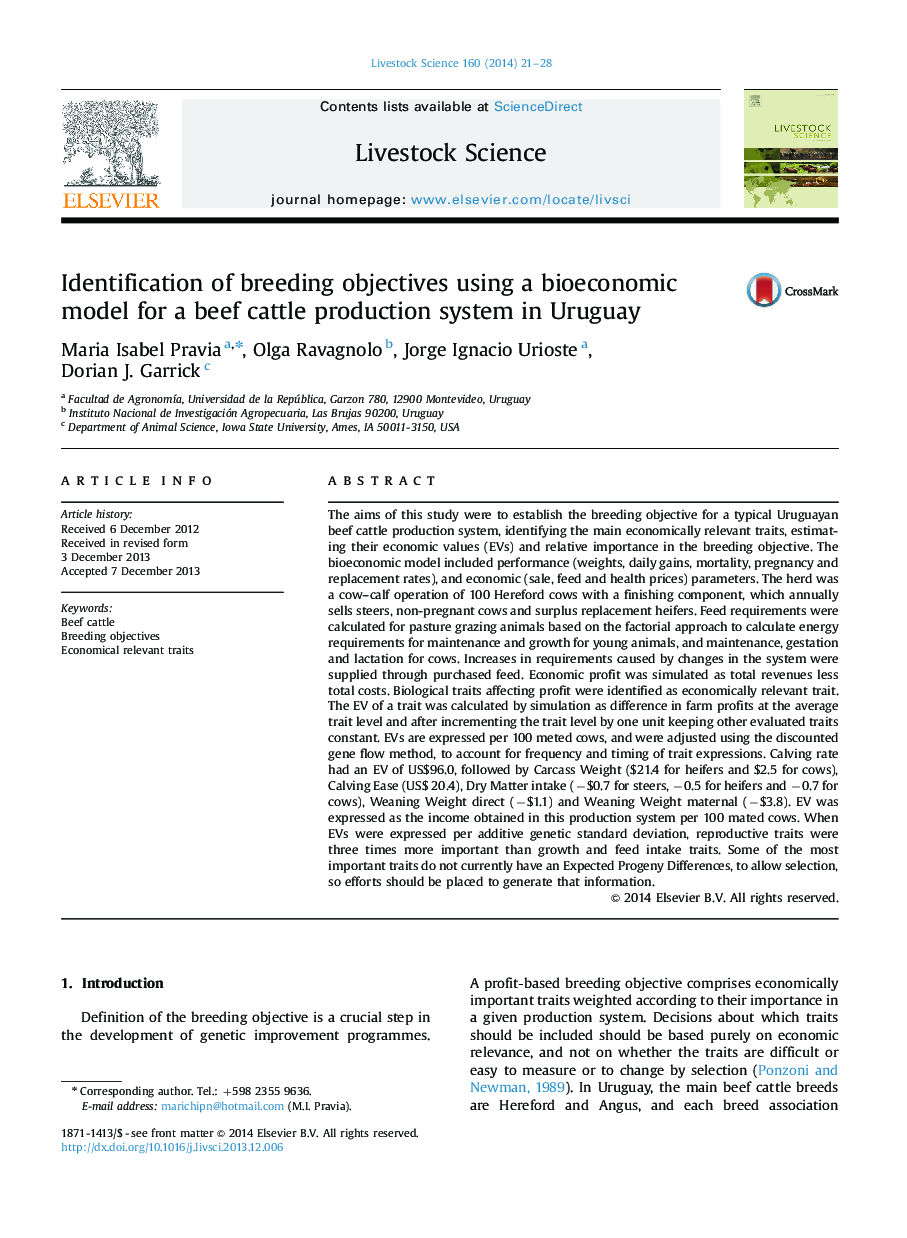| کد مقاله | کد نشریه | سال انتشار | مقاله انگلیسی | نسخه تمام متن |
|---|---|---|---|---|
| 2447290 | 1553972 | 2014 | 8 صفحه PDF | دانلود رایگان |
The aims of this study were to establish the breeding objective for a typical Uruguayan beef cattle production system, identifying the main economically relevant traits, estimating their economic values (EVs) and relative importance in the breeding objective. The bioeconomic model included performance (weights, daily gains, mortality, pregnancy and replacement rates), and economic (sale, feed and health prices) parameters. The herd was a cow–calf operation of 100 Hereford cows with a finishing component, which annually sells steers, non-pregnant cows and surplus replacement heifers. Feed requirements were calculated for pasture grazing animals based on the factorial approach to calculate energy requirements for maintenance and growth for young animals, and maintenance, gestation and lactation for cows. Increases in requirements caused by changes in the system were supplied through purchased feed. Economic profit was simulated as total revenues less total costs. Biological traits affecting profit were identified as economically relevant trait. The EV of a trait was calculated by simulation as difference in farm profits at the average trait level and after incrementing the trait level by one unit keeping other evaluated traits constant. EVs are expressed per 100 meted cows, and were adjusted using the discounted gene flow method, to account for frequency and timing of trait expressions. Calving rate had an EV of US$96.0, followed by Carcass Weight ($21.4 for heifers and $2.5 for cows), Calving Ease (US$ 20.4), Dry Matter intake (−$0.7 for steers, −0.5 for heifers and −0.7 for cows), Weaning Weight direct (−$1.1) and Weaning Weight maternal (−$3.8). EV was expressed as the income obtained in this production system per 100 mated cows. When EVs were expressed per additive genetic standard deviation, reproductive traits were three times more important than growth and feed intake traits. Some of the most important traits do not currently have an Expected Progeny Differences, to allow selection, so efforts should be placed to generate that information.
Journal: Livestock Science - Volume 160, February 2014, Pages 21–28
